Today, I had a patient scheduled for a crown on #3. The tooth had a couple of deep occlusal amalgams with some darkly stained cracks on the marginal ridges. Oh sure… we can debate, “to crown or not to crown” or “when to crown” until the cows come home. I submit it’s a judgement call, based on experience and leave it at that.
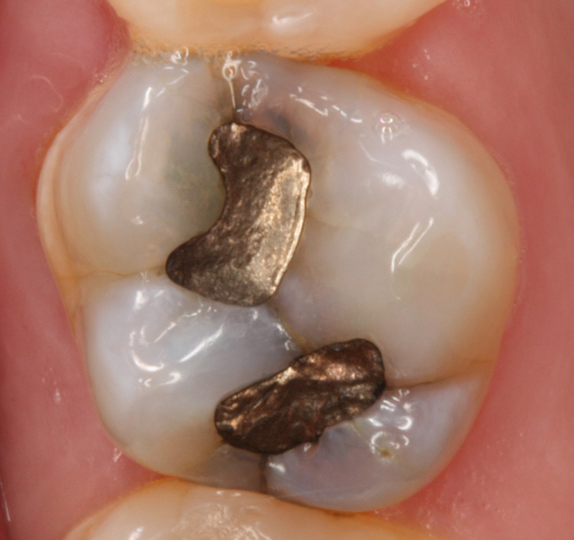
Would you crown it? Ha! Never mind. I don’t care! 🙂
Once seated in the chair, she asked if we could do gold instead of porcelain. Her husband had recently gotten a gold crown on his 2nd molar, and he remembered well the advantages I presented to him. He had relayed that same information to his wife, my patient today. Admittedly, I had not offered gold, as #3 is usually near what I call the “cosmetic transition zone.” Given that, in my experience, so few people will consent to gold, I generally limit the option to 2nd molars. In those cases, my “pitch” on the advantages of gold is compelling.
Perhaps, this experience was a reminder to start offering it more often for other teeth.
She said, “I can’t see it anyway, and I like the idea of less tooth being drilled away.” Of course, I agreed with her! Oh… she’s a bruxer, too. After a bit more discussion, it was a done deal… gold it is! There was no reason to prep the facial and lingual surfaces for full coverage. The plan was for a gold onlay.
I began by removing the amalgam and cleaning up the “schmutz.” I wanted to visualize the extent of the crack before prepping.
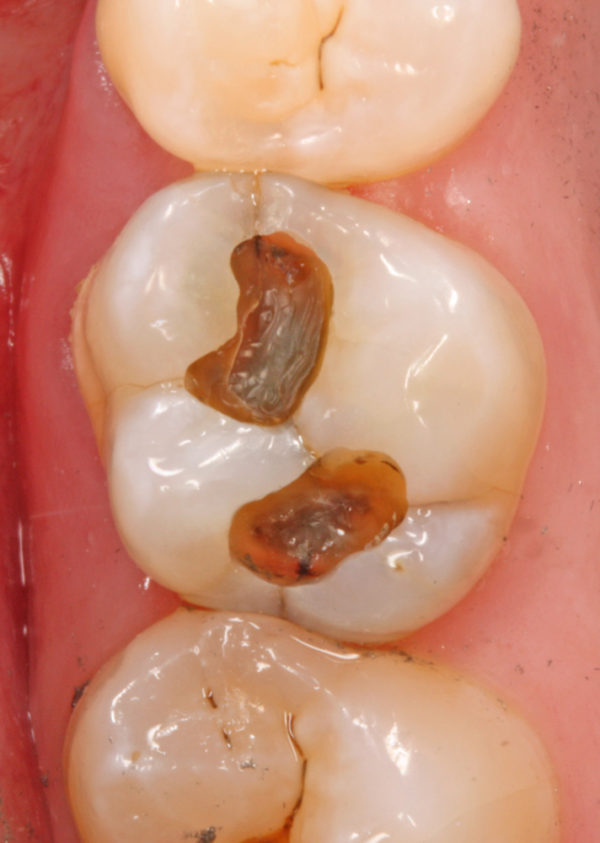
Check out the crack crossing the pulpal floor!
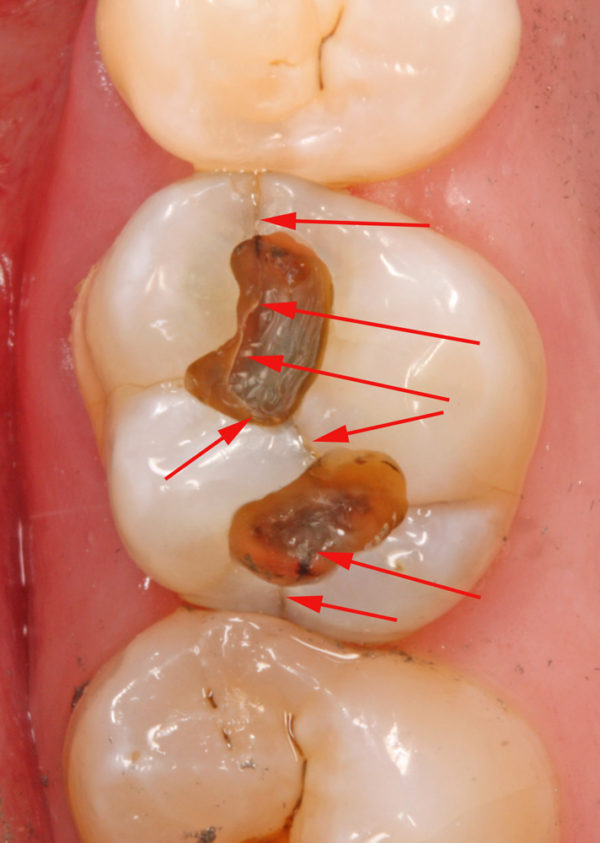
After cleaning up the “schmutz,” I used a dual-cure composite (Anchor – Apex Dental Products) bonded with Surpass (Apex Dental Products).
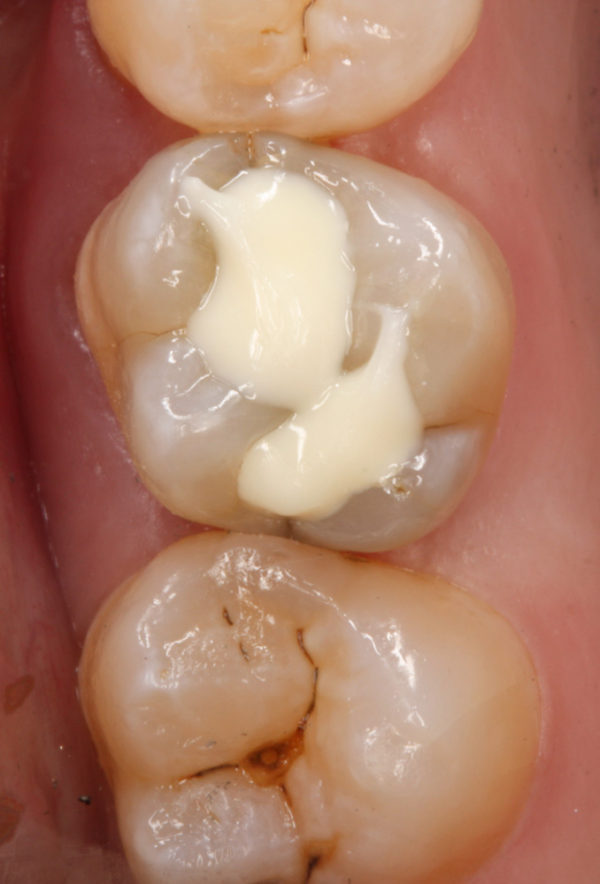
After cutting the excess build-up back, I placed depth-grooves. I still like using depth-grooves for my preps, even after 31 years of practice! It helps create a uniform reduction, which has multiple advantages. It creates a uniform thickness of the restorative material. It preserves tooth structure. It helps create resistance and retention form.
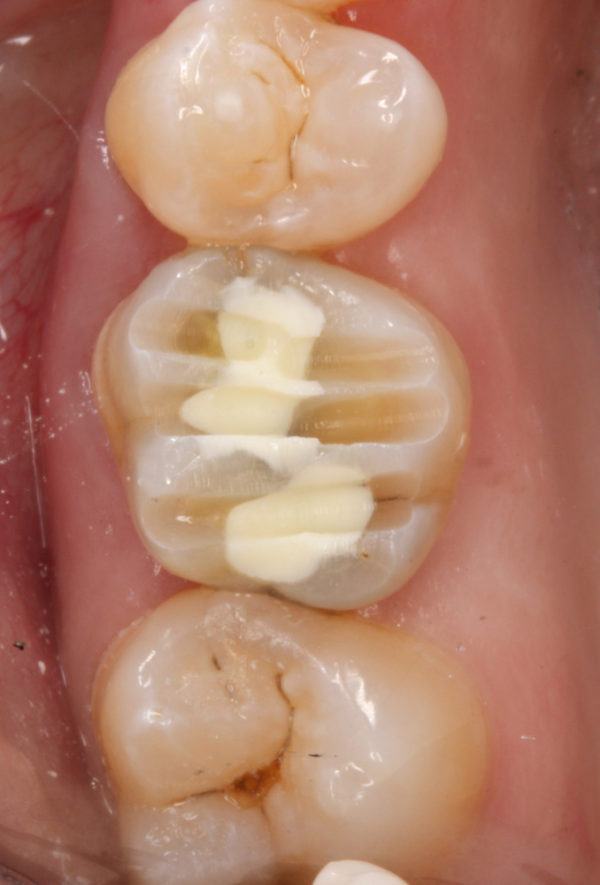
I forgot to get a photo of the prep before packing cord, so here it is with the cord in place. How far to chase the cracks? Another debate.
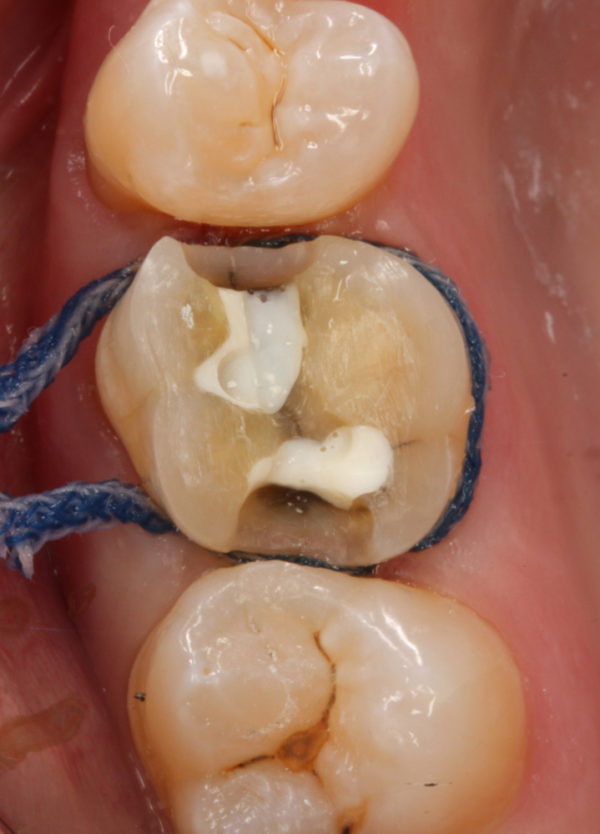
And, the impression! Love me some Impregum!

So, there ya go. I actually had fun doing it. Ironically, prepping less takes MORE time. It’s more difficult to prep. But, it’s a better service in this case. I was able to preserve most of the facial and lingual surfaces by doing an onlay prep rather than a full coverage crown.
So, who’s still doing gold? Never doing gold? Chime in on the comments section below!
 Copyright protected by Digiprove © 2020 The Dental Warrior®
Copyright protected by Digiprove © 2020 The Dental Warrior® 
The University of Tennessee taught you well.
I became a good dentist in spite of UT trying to break me (and my classmates).
🙂
Just retired last year but always recommended gold for 2nd molars.
Yep… 2nd molars beg for gold, IMO. 🙂
The gold onlays and crowns I waxed up and fabricated for myself as a student at USC in 1978 are still functioning well. Not a bad return on investment.
Old school dentistry just works! But, I hope you didn’t prep them yourself! 😉
Really great documentation as always!
Thanks, Alan!
Wont Werk! Dr Reed.
Haha! Only UT grads of that era will get that.
Totally agree with gold. After many years of practice and time in the Nav, I keep seeing long lasting results with gold. Actually prefer gold over porcelain for supra margins and minimal tooth reduction. Hate to see older patients who no longer maintain good oral hygiene and have recurrent decay under those PFM margins….toughest challenge I face. Had a patient whose dentist in SF did everything in gold when she was a teenager because “Daddy can afford it”. When I saw her in her 80’s they looked as though they had been done yesterday. Gold !!
Yep… love seeing OLD gold! I’ve got a patient with some gold foils!
I still do gold for patients that ask for it….I always offer it, especially on second molars